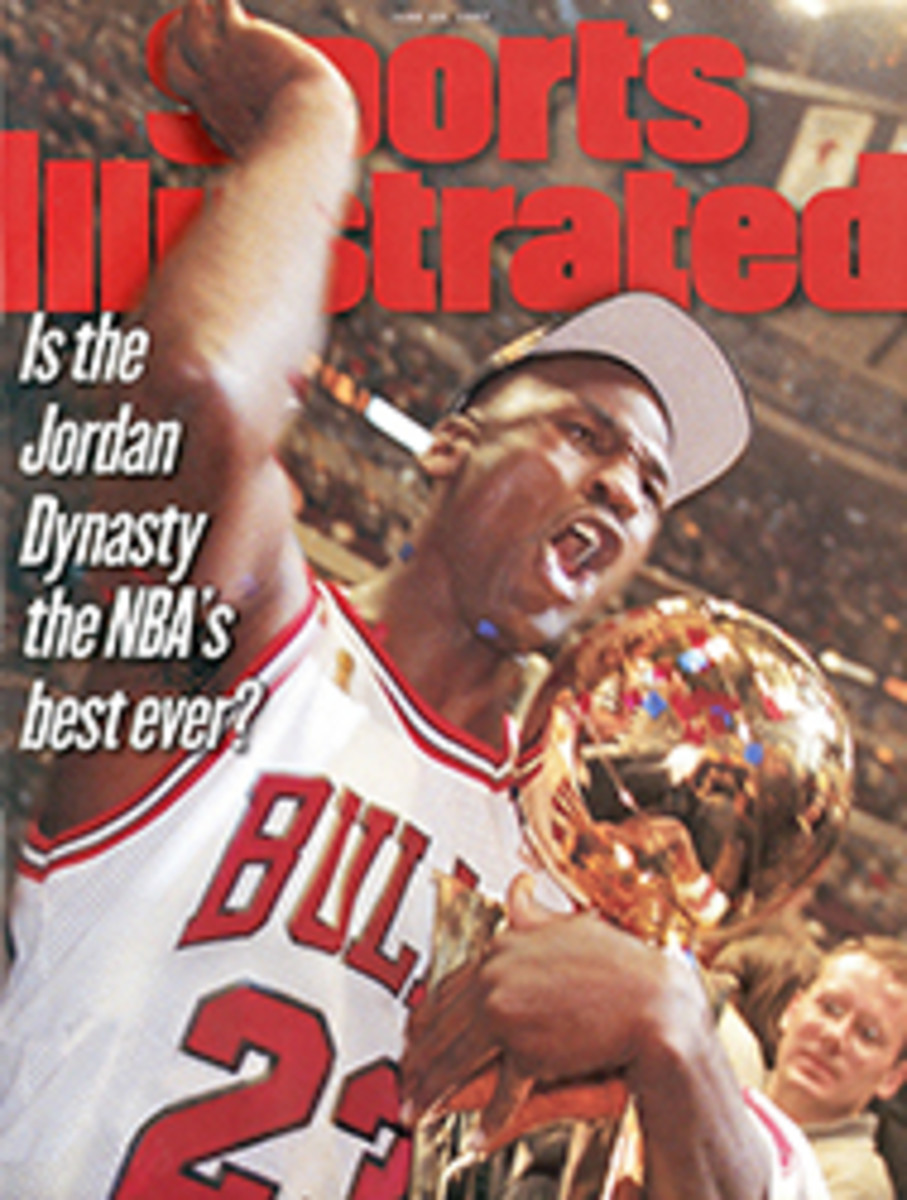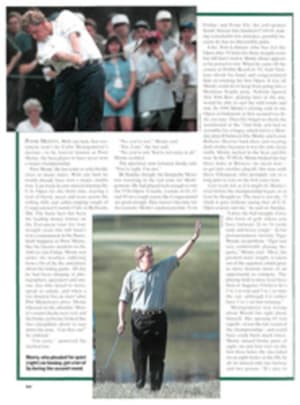
GIVE ME THE WIDE-OPEN SPACES AS BASEBALL'S FENCES MOVE IN, SOME OF THE GAME'S MOST EXCITING PLAYS MOVE OUT
The realization that the Detroit Tigers have less than three
seasons left to play in 85-year-old Tiger Stadium elicits mixed
emotions. On the one hand there is delight that a new ballpark,
expected to be ready for Opening Day 2000, will provide a boost
to inner-city Detroit. On the other hand there's also a touch of
sadness that the last of the deep outfield fences--440 feet to
straightaway center--will disappear when Tiger Stadium is torn
down, likely to be replaced by one of those standard-issue
410-footers. This development is especially worth contemplating
in the wake of the 1996 season, in which a record 17 players hit
40 or more home runs, and Ken Griffey Jr.'s major league record
24 dingers at the end of May this season.
A number of explanations have been offered for this offensive
explosion, ranging from the anemic pitching that inevitably
follows expansion, to livelier balls, to players' use of what
Lenny Dykstra once referred to in this magazine as "funny
vitamins." But don't forget that outfield fences have been
creeping steadily toward home plate for years. The first time I
went to Yankee Stadium, in 1975, the centerfield fence was 461
feet from home plate. After the House That Ruth Built was
renovated in 1976, the deepest part of the park was 430 feet, in
left center. The fence was moved in twice after that, with
centerfield now the farthest reach for hitters, at 408 feet. One
of the previous outfield fences is still visible beyond the
present one, a reminder that many home runs hit now would have
been doubles, triples or long outs in times past. So home runs
we've got. More than ever, in fact. "I guess that's what the
owners feel fans want," says Bob McConnell, editor of the Home
Run Encyclopedia. "I'd rather watch a guy hit the ball and run
like mad than watch him stand there admiring it."
Consider the precious plays baseball has pushed to the brink of
extinction. All but gone are catches like Willie Mays's
over-the-shoulder, full-tilt grab of Vic Wertz's smash to deep
centerfield at the Polo Grounds during the 1954 World Series
(above), probably the most famous defensive play in baseball
history. Mays was about 460 feet from home plate when he ran
down the ball, which means that there isn't a major league
stadium left where he or anyone else could make that catch. In
today's cramped stadiums Mays would turn, take a few steps and
then stop and merely watch as the ball cleared the fence.
A speedy outfielder in full flight is a glorious sight to
behold, the inspiration for some of the game's best lines, like,
"Willie Mays's glove--that's where triples go to die." Or my
favorite, which I first heard applied to the graceful
Philadelphia Phillies centerfielder I watched with admiration in
the 1970s: "Two thirds of the world is covered by water, the
other third by Garry Maddox." Far from being mighty oceans,
today's outfields are ponds.
Another endangered species is the triple, the most exciting hit
in baseball. After the ball leaves the bat, time seems to stand
still as the eye darts back and forth between the ball and the
base runner, measuring one's chances of arriving at third base
ahead of the other. You don't see many triples these days. For
the first third of this century the number of triples hit in the
major leagues matched the number of games played. Since then
triples per game has fallen by nearly two thirds, from 1.04 in
1930, to .75 in 1940, to .64 in '50, to .53 in '60, to .48 in
'70, to .51 in '80 and to .41 in '90. Today players are faster
than ever, yet last season there were only .38 triples per game.
Then there's the rarest hit in the game, the inside-the-park
home run. The old ballparks with deep outfields and angled
fences that produced wild caroms greatly increased the chances
for inside-the-parkers. In this era of cramped outfields and
symmetrical fences, the inside-the-park homer usually occurs as
the result of a fluke play, such as when two outfielders collide.
Owners moved the fences in, and they can move them back out.
After constructing a generation of stupefyingly ugly ballparks,
they've come to their senses in the 1990s and built stadiums
that show imagination and a welcome respect for a city's past.
Wouldn't it be nice if the Tigers--or the Milwaukee Brewers, the
San Francisco Giants or the Seattle Mariners, all of whom are
planning new facilities--had second thoughts before they finish
their new stadium and pushed those fences back again, not for
nostalgic reasons but to restore excitement to the game?
B/W PHOTO: N.Y. DAILY NEWS PHOTO [Willie Mays catching baseball in Tiger Stadium]

